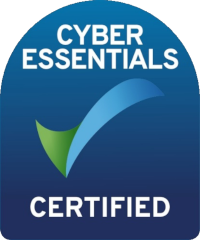BLOG
- Technology
- 03-07-2024
Accessibility in Action: Moving Beyond Compliance in Digital Learning
In the fast-paced world of EdTech, innovation often takes centre stage. But as we push boundaries with AI, gamification, and personalised learning paths, one core principle must remain front and centre: accessibility.
Accessibility is not just about ticking legal boxes or meeting baseline compliance. It’s about creating digital learning experiences that are usable and effective for everyone. For the 1 in 5 people in the UK living with a disability - and countless others navigating temporary or situational limitations - accessible design isn’t optional. It’s essential.
Accessibility is Equity in Action
When we talk about digital accessibility, we’re really talking about equity. Making your e-learning platforms, content and tools usable for people with disabilities is a concrete way to reduce educational barriers and foster inclusion.
It’s not only about screen readers or captions (although those are important). It’s also about recognising that learners access information in different ways, whether due to visual impairments, neurodiversity, learning difficulties, low bandwidth connections or simply personal preference.
Accessible design improves usability for everyone, not just for people with diagnosed conditions. Think of closed captions helping someone watching without sound, or clear navigation supporting learners on mobile devices. These are not just technical tweaks, they are steps towards inclusive learning that works in the real world.
No Organisation is Perfect, but Progress Starts Somewhere
Let’s be clear: no business, platform or educator gets everything right the first time. Accessibility is an ongoing process, not a static achievement.
The important thing is to start.
Waiting until a full redesign is possible often means delaying improvements that could help learners today. Instead, focus on small, intentional updates that move your content and platforms in the right direction.
Here are five impactful areas where you can begin making a difference:
1. Improve Video Accessibility
Video content is a cornerstone of modern e-learning. But without captions or transcripts, it can exclude a wide range of users - including those who are deaf, hard of hearing or non-native English speakers.
Start here:
-
Add closed captions to all new video content.
-
Provide downloadable transcripts for longer sessions.
-
Use tools like Microsoft Stream or YouTube’s auto-captioning (and manually correct them for accuracy).
Not only does this support learners with hearing impairments, but it also boosts retention and engagement across your whole audience.
2. Make Content Navigable Without a Mouse
Not every learner uses a mouse or trackpad. Some rely entirely on keyboards or assistive technologies to navigate.
Ask yourself:
-
Can learners tab through your platform or website without getting stuck?
-
Are interactive elements clearly labelled?
-
Are dropdown menus and pop-ups usable via keyboard?
Many platforms fall short here, and fixing it often requires collaboration with your development team. But it is one of the most critical aspects of digital accessibility, and one of the most overlooked.
3. Use Clear, Readable Design
Visual clutter, poor contrast and stylised fonts may look modern but can make learning unnecessarily difficult - especially for people with dyslexia, ADHD or visual impairments.
Design with clarity in mind:
-
Use high contrast between text and background.
-
Avoid text over complex images.
-
Choose sans-serif fonts and maintain consistent sizing.
-
Break up large chunks of text with headings and bullet points.
Tools like the WebAIM Contrast Checker can help ensure your colours meet WCAG guidelines.
4. Add Alt Text and Descriptive Labels
Alt text allows screen readers to describe images to visually impaired users. Descriptive button labels also help users understand what actions they are taking.
Review your content for:
-
Meaningful image descriptions (not just “image1.jpg” or “graphic”).
-
Clearly labelled buttons, especially on forms and interactive elements.
-
Avoid using images of text, as this cannot be read by assistive technologies.
It is a small change that has a significant impact on navigation and comprehension.
5. Use Trusted Accessibility Tools
There is a growing number of built-in tools that make accessibility easier for educators, designers and developers, many of which are free.
Some popular tools include:
-
Microsoft Immersive Reader – helps learners with text-to-speech, grammar support and line focus
-
WAVE Accessibility Checker – highlights issues on web pages in real time
-
Loom and Descript – provide captioning options for video creation
-
Texthelp Read&Write – supports literacy and learning for diverse needs
Choosing tools that embed accessibility from the ground up saves time and supports learners from day one.
Shifting Mindsets: From Compliance to Culture
One of the biggest shifts needed in the EdTech space is a mindset change. Accessibility cannot just sit with one person or team. It should be part of how everyone - from product to marketing to teaching staff—approaches their work.
Here are a few practical ideas to build that culture:
-
Include accessibility in your project checklists.
-
Host short training sessions for content creators.
-
Regularly audit your platform or courses using WCAG standards.
-
Gather feedback directly from learners with diverse needs.
Accessibility is a shared responsibility. When everyone plays a part, progress accelerates.
Final Thoughts: What’s Your First Step?
Perfect accessibility is not achieved overnight. But small, thoughtful updates made consistently can transform the learning experience and build trust with your audience.
So here is the question I’d like to leave you with:
What’s one accessibility feature you’ve added (or plan to add) this year?
Whether it is as simple as enabling captions or as involved as a site-wide audit, every step counts.
If you would like a free accessibility checklist to share with your team, feel free to get in touch or leave a comment. Let’s keep raising the bar for inclusive digital learning.

Lucy Greenwell
Product Marketing ManagerLucy is passionate about using technology and communication to improve organisations and help meet the needs of stakeholders and users.
Contact us
If you'd like to know more about how we can help your organisation, please get in touch.
Subscribe to our newsletter
About Us
Innovative digital solutions for education - supporting policy, leadership, delivery, and learning

Useful Links
Contact Us
Trent Lodge
Stroud Rd
Cirencester
GL7 6JN
0117 4573283